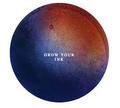Playlist: Britt Wray's Portfolio

Featured
Living Hard Drives
From Britt Wray | 07:54
Just how does the hard drive in your computer differ from the information storage system that is DNA? This is the story of the very real possibility of storing digital files…in living cells!
- Playing
- Living Hard Drives
- From
- Britt Wray

Synthetic biologists are figuring out ways to store digital information in DNA. This move towards inert molecular and then “living" hard drives is explored through conversations with Dr. George Church (Harvard Medical School) and Dr. Drew Endy (Stanford University) – leading thinkers and practitioners in synthetic biology. Includes a cameo by Synbiota’s Justin Pahara.
Design Fiction
From Britt Wray | 07:48
What does it mean to design technology that doesn't exist...yet? This type of design exists, and it takes its inspiration from Science Fiction. They call it...Design Fiction.
- Playing
- Design Fiction
- From
- Britt Wray
 What does it mean to design technology that doesn't exist...yet? This type of design exists, and it takes its inspiration from Science Fiction. They call it...Design Fiction.
What does it mean to design technology that doesn't exist...yet? This type of design exists, and it takes its inspiration from Science Fiction. They call it...Design Fiction.
This story is about how design fiction imagines and shapes future technologies, featuring transmedia futurist Trevor Haldenby and engineer/philosopher Julian Bleecker.
Bio-hackers Grow Their Own Ink
From Britt Wray | 07:15
What does it mean to live in a world where biotech is done for and by the people? How long might it be until we are all growing our own ink, laundry detergent and perfume from manipulated microbes? A group of French bio-hackers are leading the movement, bringing bio-hacking into the home.
- Playing
- Bio-hackers Grow Their Own Ink
- From
- Britt Wray
 What does it mean to live in a world where biotech is done for and by the people? How long might it be until we are all growing our own ink, laundry detergent and perfume from manipulated microbes? A group of French bio-hackers are leading the movement, bringing bio-hacking into the home.
What does it mean to live in a world where biotech is done for and by the people? How long might it be until we are all growing our own ink, laundry detergent and perfume from manipulated microbes? A group of French bio-hackers are leading the movement, bringing bio-hacking into the home.
The Art of De-Extinction
From Britt Wray | 06:28
A group of scientists are now trying to bring extinct animals - like the woolly mammoth and passenger pigeon - back to life, in a movement called De-Extinction. But there's much more to it than biotechnology. The entire idea has an art to it. One painter, Isabella Kirkland, is making work that touches on the philosophy at the center of it all.
- Playing
- The Art of De-Extinction
- From
- Britt Wray
 The description below is taken from WNYC's Studio 360 with Kurt Anderson, where the piece originally aired. http://www.studio360.org/story/307026-de-extinction/
The description below is taken from WNYC's Studio 360 with Kurt Anderson, where the piece originally aired. http://www.studio360.org/story/307026-de-extinction/
Bringing extinct animals back has usually been left to the world of science fiction. But a group of biologists is attempting it in the real world. The organization Revive & Restore , a project of the Long Now Foundation, held a day-long TEDx conference on de-extinction a few months ago at the National Geographic Society. This is not quack science; some of the research involves Harvard University, UC Santa Cruz, and Wake Forest University, among other institutions.
Painter Isabella Kirkland , who is also a research associate at the California Academy of Sciences, opened the event with an image of her painting Gone . It looks like a Dutch master’s oil painting, depicting 63 extinct New World species arrayed on a table elegantly: the Carolina parakeet, the golden toad, and in the central place of honor, Martha, the last passenger pigeon , who died in 1914.
The passenger pigeon is the preoccupation of Revive & Restore’s Ben Novak , a genetic biologist. “It’s my job to bring the bird back to life.” Novak began thinking about resurrecting animals in junior high school, when he did a science fair project on the dodo bird. “It’s the icon of extinction — ‘dead as a dodo,’ as they say — and I learned that the dodo is actually a giant extinct pigeon. It gave me the pigeon bug.” The techniques are complicated and untried, but de-extinction is simple in concept: take DNA from a dead sample in a natural history museum somewhere, and plant it in the egg of a living relative — in this case, the band-tailed pigeon. If it works, the living bird will hatch an egg out of which will come the clone of a long-dead bird.
But many scientists are skeptical of or opposed to this so-called Great Comeback. David Ehrenfeld , a conservation biologist at Rutgers University, points out that bringing back a few examples of a species won’t have much of an effect on the diversity of our ecosystem — especially a species that lived in massive flocks like the passenger pigeon. Meanwhile, resources will be directed to a flashy, high-tech project, as conservationists count the living species dying off year after year.
If the de-extinction of the passenger pigeon works, and the species is somehow reintroduced into the wild, perhaps Isabella Kirkland will retouch her painting Gone , substituting some other photogenic animal in pride of place. Perhaps the critically endangered Sumatran rhino? There are, and will continue to be, a wealth of candidates .